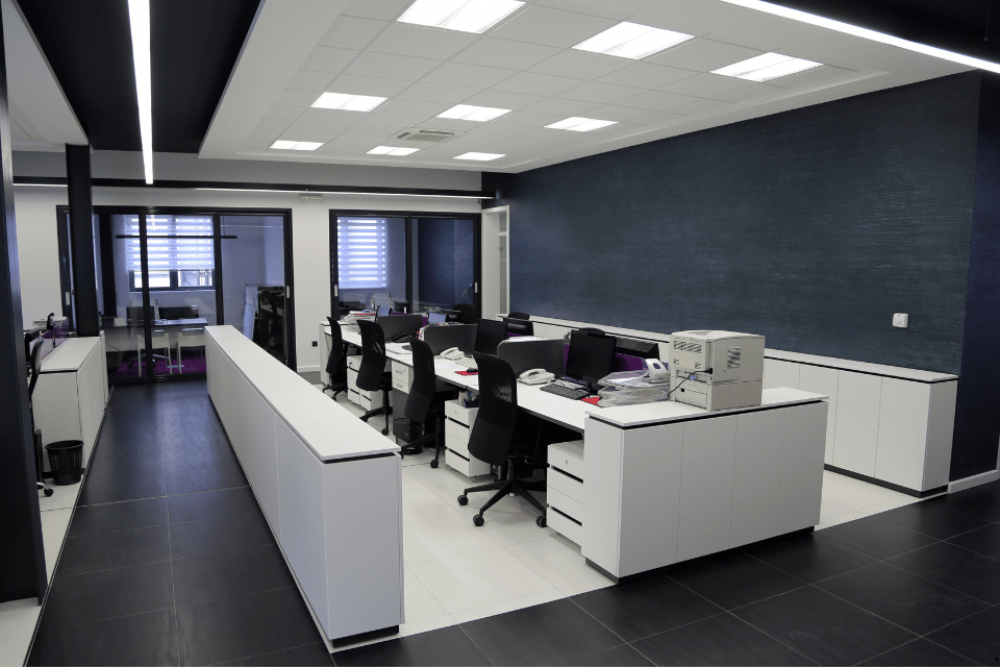
Choosing Quality Used Office Furniture Without Compromising on Style
In today's dynamic business environment, outfitting an office with stylish and functional furniture is essential for creating an inspiring and productive workspace. However, budget constraints can often make investing in new office furniture challenging. Fortunately, purchasing quality used office furniture offers a cost-effective solution without sacrificing style. We will explore key considerations and strategies for selecting pre-owned office furniture that meets both practical needs and aesthetic preferences.
Assessing Your Office Needs and Space
Before searching for used office furniture houston, assessing your specific office needs and the available space is crucial. Start by evaluating the type of furniture required, such as desks, chairs, storage units, and conference tables. Consider the number of employees and the nature of their work to determine the quantity and variety of furniture pieces necessary. Additionally, accurate measurements of the office space should be taken to ensure that the chosen furniture will fit comfortably without overcrowding the area. Understanding these fundamental aspects will guide your decisions and help you avoid unnecessary purchases.
Once you clearly understand your requirements, think about the style and design that best complements your office's aesthetic. Whether you prefer a modern, minimalist look or a more traditional, classic feel, identifying your desired style will narrow your options and make the selection process more efficient. Remember that functionality should not be compromised for style; the furniture must support your employees' productivity and comfort. You can create a cohesive and visually appealing environment by thoroughly assessing your office needs and space.
Evaluating the Quality and Condition of Used Furniture
When purchasing used office furniture, quality and condition are paramount. Start by examining the materials and craftsmanship of each piece. High-quality furniture is made from durable materials such as solid wood, metal, or high-grade plastic. Check for signs of wear and tear, such as scratches, dents, or fading. While minor imperfections are often acceptable, extensive damage can compromise the furniture's longevity and appearance. Pay special attention to moving parts like drawers and wheels to ensure they function smoothly.
Another critical aspect of evaluating used furniture is assessing its structural integrity. Sit on chairs and lean on desks to test their stability. Wobbly or unsteady furniture can be a sign of poor construction or damage. Additionally, inquire about the furniture's history and previous usage. Furniture from corporate environments or professional settings is generally more reliable than pieces from casual or residential use. Feel free to ask the seller about maintenance and any repairs that have been done. Understanding the furniture's background will give you insights into its durability and potential lifespan.
Finding Reputable Sellers and Inspecting Inventory
Finding a reputable seller ensures you get high-quality used office furniture. Start by researching online reviews and testimonials from previous customers. Look for sellers with a proven track record of providing quality products and excellent customer service. Visiting local used furniture stores, consignment shops, and office furniture liquidation sales can also be fruitful. These places often have knowledgeable staff who can guide you through the selection process and offer insights into the furniture's quality and condition.
When you find a potential seller, take the time to inspect their inventory in person. Photos and descriptions can be deceiving, so seeing the furniture firsthand is essential. Walk around the store, test different pieces, and ask questions about the items you're interested in. Pay attention to the overall cleanliness and organization of the store, as it often reflects the seller's professionalism and commitment to quality. Bring a tape measure and a list of your office's dimensions to ensure the furniture fits appropriately.
Balancing Style and Functionality
Balancing style and functionality is critical to creating a cohesive and efficient office environment. While aesthetics are important, the furniture must meet practical needs and support your employees' productivity. Start by prioritizing ergonomic furniture, such as adjustable chairs and desks, that promote comfort and reduce the risk of work-related injuries. Ergonomic furniture enhances employee well-being and contributes to a more professional and attractive office appearance.
Once you've ensured that the furniture meets functional requirements, match it with your desired style. Look for pieces that complement your office's color scheme, design theme, and overall ambiance. Mixing and matching different styles can create a unique and personalized look, but be careful not to overdo it. Aim for a cohesive design that reflects your company's brand and values. Consider adding decorative elements, such as plants, artwork, and lighting, to enhance the overall aesthetic and create a welcoming atmosphere.
Choosing quality used office furniture without compromising style is a practical and budget-friendly approach to creating an appealing and functional workspace. By carefully assessing your office needs, evaluating the quality and condition of the furniture, finding reputable sellers, balancing style and functionality, and negotiating prices, you can make informed decisions and achieve a cohesive office environment. Investing in pre-owned furniture not only saves money but also promotes sustainability by giving new life to well-crafted pieces. With thoughtful planning and consideration, you can transform your office into a stylish and productive space that reflects your company's values and enhances employee satisfaction.

